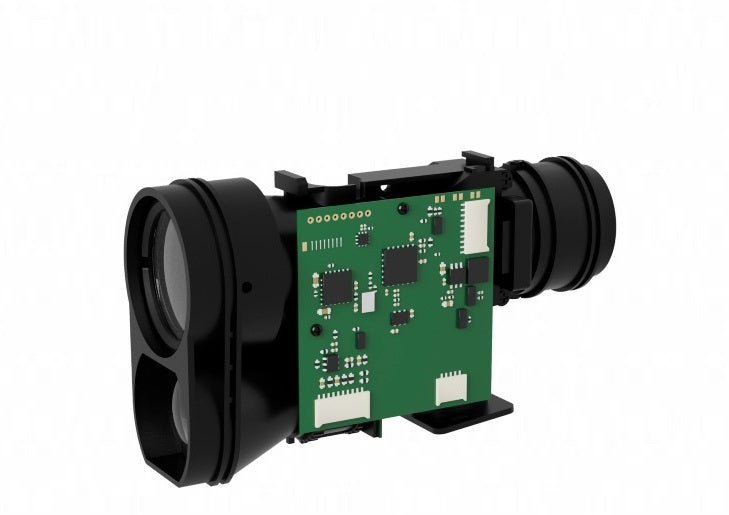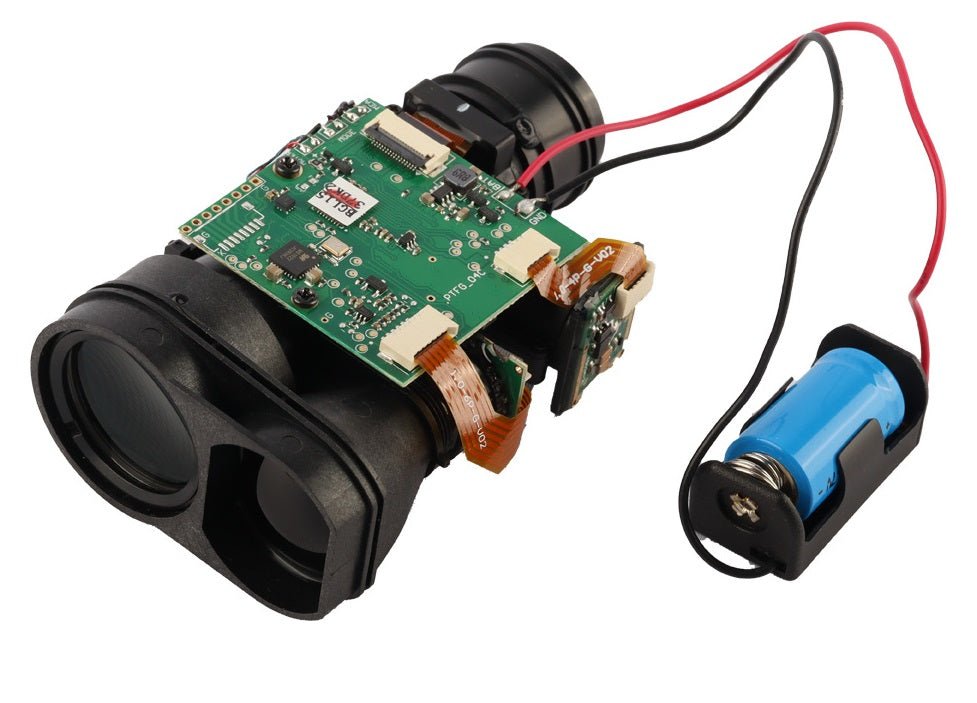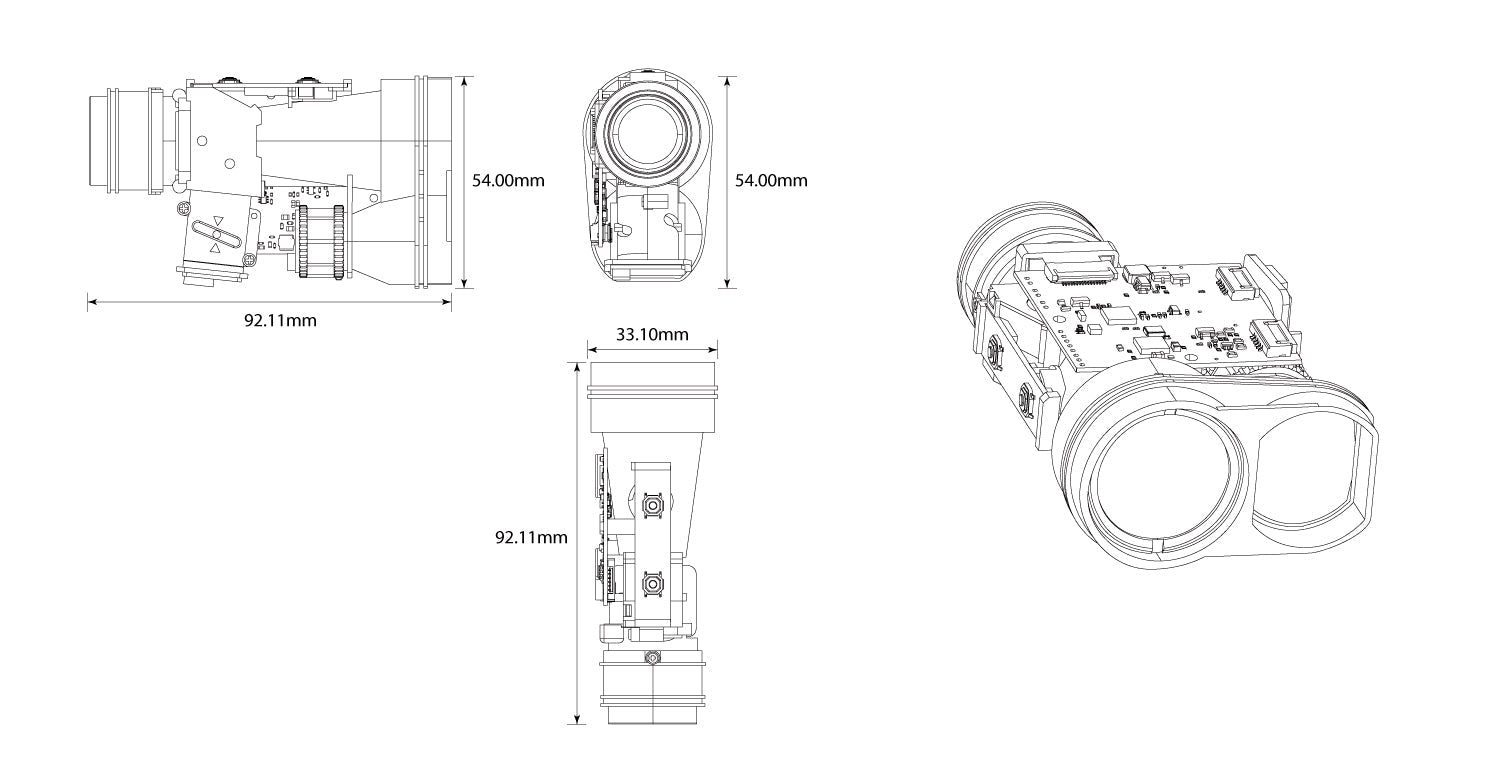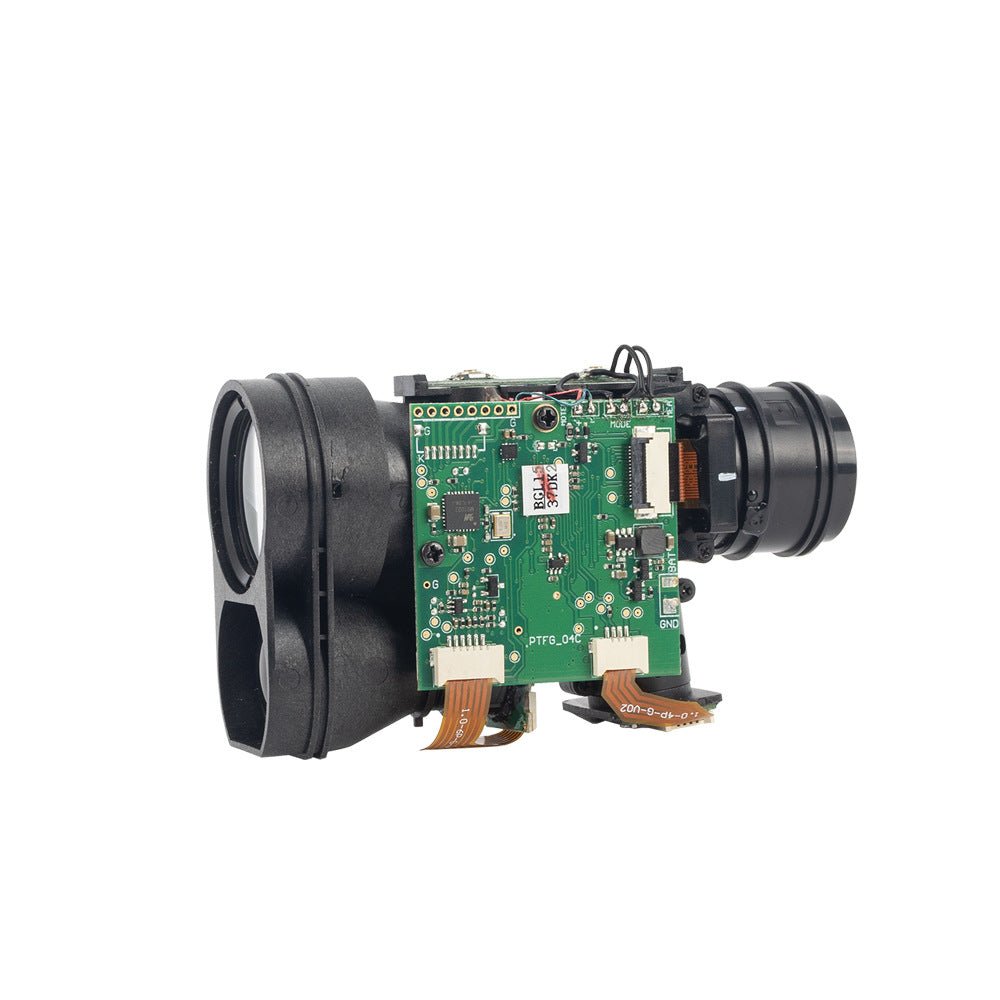



3KM Long Distance Pulsed Laser RangeFinder Module
A pulsed laser rangefinder module is a precision optoelectronic device that measures distances using pulsed laser signals and time-of-flight (ToF) principles. It emits short, high-intensity laser pulses and calculates the distance by measuring the time delay between the emitted pulse and its reflected return from a target. Key advantages include long detection ranges (up to several kilometers), resistance to ambient light interference, and suitability for dynamic or outdoor environments.
Key Features:
- High Speed: Rapid pulse emission (kHz frequencies) enables real-time distance tracking.
- Long Range: Capable of measuring from meters to kilometers, depending on laser power and wavelength (e.g., 905nm for cost efficiency, 1535nm for eye safety and atmospheric penetration).
- Robust Performance: Operates reliably in harsh conditions (e.g., temperature extremes, dust, rain).
Applications:
- Industrial Automation: Collision avoidance, robotic navigation.
- Surveying & Mapping: Terrain modeling, forestry monitoring.
- Autonomous Systems: Drones, self-driving vehicles.
- Defense/Security: Border surveillance, target tracking.
Specs:
Measurement Range: 5-3000m
Maximum Single Measurement Time: ~0.6s
Absolute Accuracy: ±1m (<200m), 0.5% (>200m)
Blind Zone: 5m
Resolution: 0.1m
Laser Specifications: 905nm, Class 1
Frequency: 1-3Hz
Operating Voltage: DC 3~5V(CR2 battery/LI battery versions customizable)
Communication Interface: UART(Default baud rate: 115200bps)
Serial Port Level: TTL 3.3V
Operating Temperature: 0~50℃
Storage Temperature: -30℃~60℃
Dimensions: 92×54×33.1mm
Weight: 66g
Environmental Compliance: RoHS

3KM Long Distance Pulsed Laser RangeFinder Module
If you have any questions, you are always welcome to contact us. We'll get back to you as soon as possible, within 24 hours on weekdays.
-
Shipping Information
Use this text to answer questions in as much detail as possible for your customers.
-
Customer Support
Use this text to answer questions in as much detail as possible for your customers.
-
FAQ’s
Use this text to answer questions in as much detail as possible for your customers.
-
Contact Us
Use this text to answer questions in as much detail as possible for your customers.
FAQs
Please read our FAQs page to find out more.
What transportation method do you use?
All our products are shipped via international express services, such as DHL and FedEx,? completely free of charge
What is DLP 3D printing, and how does it work?
DLP 3D printing is a resin-based additive manufacturing technology that uses light to cure liquid photopolymer layer by layer. It involves projecting digital images onto a vat of liquid resin, where the exposed resin hardens to form each layer of the 3D object.
How does DLP 3D printing differ from other 3D printing technologies?
DLP 3D printing differs from other technologies such as FDM (Fused Deposition Modeling) in its use of light to cure resin, which allows for faster and more precise printing. It also typically offers higher resolution and smoother surface finishes.
Why are UV projectors critical in DLP 3D printing?
UV projectors are critical in DLP 3D printing because they emit the ultraviolet light that cures the resin. The quality, speed, and reliability of the printing process depend heavily on the performance of the UV projector.
What factors should be considered when selecting a UV projector for DLP 3D printing?
When selecting a UV projector, factors to consider include wavelength, resolution, LED lifespan, controller compatibility, and mechanical integration. The ideal projector should match the specific needs and requirements of the DLP 3D printing system.
What are the system requirements for DLP 3D printing?
System requirements for DLP 3D printing include a compatible UV projector, resin vat, build platform, and control system. Specific hardware specifications, such as resolution and interface compatibility, should also be considered.
How do I connect and configure a DLP 3D printing system?
Connecting and configuring a DLP 3D printing system typically involves connecting the UV projector to a PC via USB, launching the manufacturer's proprietary configuration software, and setting up the printer parameters, such as layer thickness and exposure time.
What is "pixelation" in DLP 3D printed models, and how can it be addressed?
Pixelation" refers to the appearance of tiny square or grid-like patterns on the surface of DLP 3D printed models. It can be addressed by increasing the resolution of the UV projector, adjusting the light curing parameters, or optimizing the print path.
What role do TIR prisms play in DLP 3D printing, and why are they important?
TIR (Total Internal Reflection) prisms play a critical role in DLP 3D printing by precisely redirecting light from the micro-mirror arrays to the projection optics. They maintain polarization and ensure that the light is evenly distributed across the resin vat, which is essential for high-quality printing.
What languages and currencies are supported on
The website supports multiple languages, including English, Simplified Chinese, Arabic, Korean, German, and Japanese. It also offers a variety of currency options, such as USD, EUR, AUD, and more, to cater to international visitors.
How can I stay updated with new collections and exclusive offers
To stay updated with new collections and exclusive offers, you can subscribe to the website's newsletter by providing your email address. This will allow you to receive notifications about the latest products, promotions, and news directly to your inbox.
